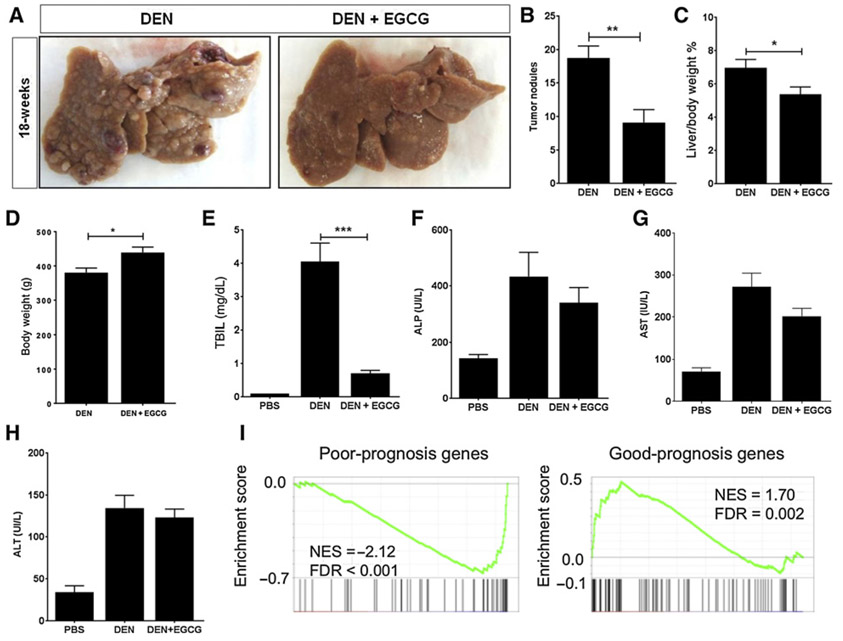Figure 1.
EGCG inhibits HCC development in diethylnitrosamine (DEN)-injured rats. Male Wistar rats received weekly intraperitoneal injections of diethylnitrosamine for 18 weeks. After 12 weeks, a subset of rats received 0.02% EGCG in their drinking water during weeks 13–18. A and B, Representative rat liver images at the time of sacrifice. Tumors that were greater than 5 mm in diameter were counted. N = 8; **, P < 0.01 compared with untreated diethylnitrosamine controls. Liver/body weight (C) and body weight (D) was measured and compared with diethylnitrosamine-injured rats. *, P < 0.05. Serum levels of TBIL (E), ALP (F), AST (G), and ALT (H) are reported. N = 4 for all groups; ***, P < 0.001 compared with untreated diethylnitrosamine group. I, Gene set enrichment analysis of the 73-gene poor-prognosis signature and 113-gene good-prognosis signature in diethylnitrosamine-injured rats after treatment with EGCG.

